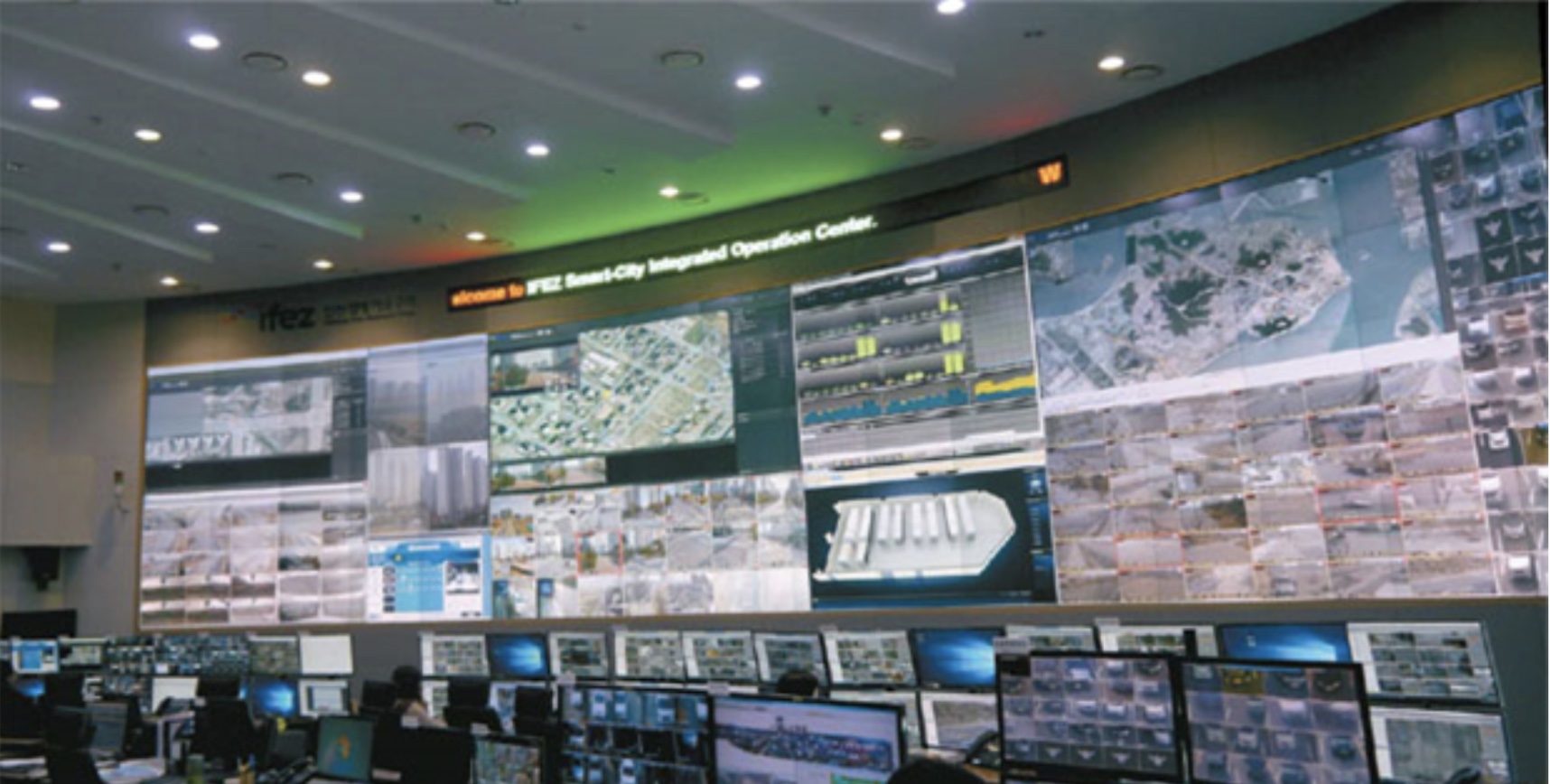Songdo two decades on: The cautionary tale in smart city design

Cities take up 3 percent of the Earth’s surface, yet hold more than half the global population. That share is only growing, with urban centres absorbing an ever-larger proportion of people. This influx of billions of people is leading to more traffic, greater demand for energy, water, and housing, as well as a sharp rise in waste.
This is the reality that mayoral leaders all over the globe are currently facing, hence it’s no surprise that smart cities have become such a big topic.
As cities swell, their inefficiencies will become harder to ignore. By 2050, nearly 70 percent of the world’s population is projected to live in urban areas, up from 56 percent in 2021 according to the United Nations Department of Economic and Social Affairs (UN DESA).
Cities will face increasing pressure to evolve and implement new systems to accommodate the rapid growth of their populations. While some countries have introduced incentives to encourage relocation to less populated, rural areas, others are focused on modernizing their urban centers to absorb even more residents, employing the power of emerging technology to meet future demand.
Countries like Japan, Korea, and Singapore have made serious investments in building the cities of the future. The goal has always been straightforward: use data and automation to keep essential systems running more efficiently under growing pressure.
Smart cities, built on premature promises
Songdo, South Korea. A $40 billion city built on reclaimed land outside Incheon in 2002 was designed to be the first smart city of the future. Songdo was built entirely from the ground up and equipped with 500,000 sensors that feed real-time data on traffic, waste, and security.
The city was designed to optimize key services. Sensors monitor traffic and adjust signal timing or re-divert traffic to reduce congestion. Smart meters report energy and water usage instantly. Automated waste systems sort and distribute trash using underground pneumatic networks, while the heat used from waste processing is redirected back into residential buildings.
The goal was to create a system more responsive than normal human capabilities, using data collected from these sensors to act faster and even predict the next challenge – but as Songdo has shown, coordinating these systems at scale often proves harder than building them.
Every process is tightly integrated and fed back to their Incheon Integrated Operations Center (IOC). Songdo’s design checked every box of early smart city thinking: total connectivity, real-time data, and centralized control.

In practice, however, just like other smart city projects, Songdo fell short of its ambitious goals.
Many current smart cities fall into one of two traps. Some rely on fragmented control, with siloed agencies managing their own sectors efficiently but failing to coordinate across the system. Others, like Songdo, are built around such centralized control that they become rigid and slow to adapt as conditions shift. In both cases, these tightly controlled systems struggle to evolve alongside the unpredictable, organic growth that defines truly prosperous cities.
What Songdo got wrong
Critics argue that the city’s design prioritizes control over flexibility: Saskia Sassen, professor of sociology at Columbia University, described the city as a “self-contained complex system” that fails to leverage the intelligence of its residents. “It’s very much a controlled space where not much can be changed.”
Songdo may have set the template for integrated urban systems, but its rigidity has left it disconnected from the kind of organic innovation that makes cities thrive: “Songdo’s entire approach has been too top-down, too corporate,” said Anthony Townsend, author of Smart Cities. “They tried to out-Disney Disney… and expected a city to magically erupt”
Within Songdo’s Integrated Operations Center (IOC), systems don’t flex to meet new demands – they wait for updates from the center. Instead of growing with its residents and environment, the city runs parallel to it. Built in an era before smartphones and AI defined urban life, It treats the urban environment as something to manage and control, not something to work alongside.
But cities have always evolved through organic, incremental activity shaped by people on the ground. Planned systems can support that only if they’re built to work with their environment, not override it. The issue isn’t the technology; it’s the rigid architecture that leaves no space for the adaptive growth that defines every great city.
Addressing this requires decentralization. DePIN (Decentralized Physical Infrastructure Networks) offers one way to build systems that can evolve in parallel with the cities they’re meant to support, leveraging distributed ownership to create infrastructure that adapts as cities change.
Connectivity without adaptability
Songdo was a revolutionary idea decades ago. Architects had a forward-looking and ambitious vision of a hyper-connected urban future, but that architect anchored vision reflected the limitations of early smart city thinking that did not fully account for the diverse needs and organic growth of its inhabitants..
Infrastructure was implemented as if the future could be pre-programmed, with fixed systems and centralized controls dictating how people would live, move, and interact. But cities don’t work that way. They’re dynamic, adaptive, and shaped by human behaviors that no blueprint can fully predict.
Nowhere is this more apparent than in Songdo’s smart tech infrastructure. Core systems like Cisco’s home telepresence terminals, once heralded as cutting-edge, quickly became obsolete in the face of mobile-first, cloud-based tools. Meanwhile, other features, from pneumatic waste collection to sensor-heavy control rooms, were so deeply embedded in the built environment that adapting or replacing them with newer technologies proved difficult and costly. The result is a city that, for all its connectivity, struggles to evolve.
It was a warning for future projects that, without a decentralized foundation, smart cities risk becoming rigid structures unable to evolve with dynamic organic growth that defines urban life.
Decentralization is the missing layer in building adaptive cities
Cities need systems that can adapt in real time, not ones that wait for instructions from a central office. DePIN makes this possible by distributing control across the network. Machines, agents, and services can coordinate using cryptographic proofs of real-world events like location, presence, and activity, all verifiable without needing permission. This gives smart cities like Songdo the flexible infrastructure they need to evolve and grow organically.
By combining DePIN with AI, smart cities can evolve from simply reacting to problems into anticipating and solving them before they occur. As DePIN networks gather real-time, verifiable data from a wide array of sources, AI can process and interpret this information instantly, identifying patterns, forecasting potential issues, and optimizing resource allocation without human intervention.
The result is a city that doesn’t just function, it actively learns and improves with every interaction. With AI-enabled DePIN, traffic congestion can be eased before it builds, energy demand can be balanced proactively, and public services can be adjusted dynamically to meet shifting needs.
With AI models continually refining themselves on hyperlocal data, urban infrastructure can adapt at a pace that exceeds the speed of change, improving efficiency and resilience while also enhancing quality of life for residents to create spaces that are more connected, resilient and responsive. In this future, AI acts as the brain and DePIN as the nervous system, working together to power cities that grow smarter every day.
With AI-enabled DePIN infrastructure: If one part of the system fails, the rest keeps working. While localising data makes it more responsive to everyday evolution.
Cities evolve through constant change. DePIN supports that by making it easier to plug in new tools, respond to local needs, and grow without starting from scratch.
That’s how real cities work. And it’s the only way smart cities will keep up.
#SmartCities #UrbanInnovation #DecentralizedInfrastructure #AIForCities #FutureOfUrbanLife
- Art
- Causes
- Crafts
- Dance
- Drinks
- Film
- Fitness
- Food
- Spiele
- Gardening
- Health
- Startseite
- Literature
- Music
- Networking
- Andere
- Party
- Religion
- Shopping
- Sports
- Theater
- Wellness


